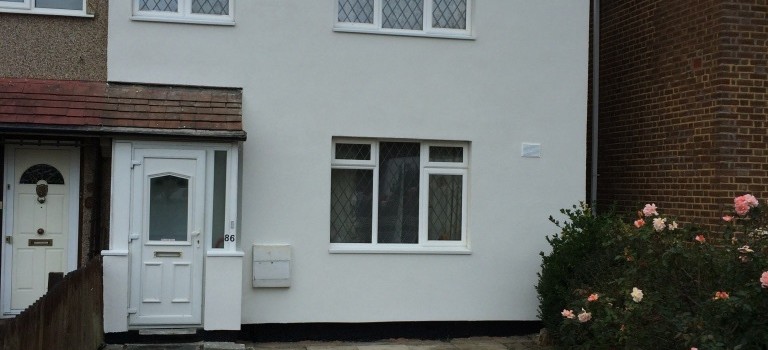
With the re-launch of the GDHIF, there has been a lot of renewed interest in insulating solid walls in properties. There are two ways to insulate this type of wall – either internal wall insulation or external wall insulation.
If your home has cavity walls, they can be injected with insulation. If your home has solid walls – or if you have already had your cavity walls insulated and want further thermal comfort – external wall insulation is a great option.
In this article we are going to look at the pros and cons of both types of solid wall insulation, and hopefully help you in making a decision in which way to go!
External Wall Insulation
External wall insulation involves adding insulation boards (normally PIR boards, but this can be mineral wool) to the external walls of the property and then rendering on top of the insulation to finish.
The pros of external wall insulation
External wall insulation is obviously designed to increase the energy efficiency of the property – 10cm of PIR insulating board added to the walls of a house will take the u-value down to less than 0.28
The current building regulations for walls are not actually as stringent as this, so the energy savings will be substantial. We normally look at about a 35% energy saving if all the external walls are insulated.
External wall insulation also improves the wall’s ability to withstand the elements. The layer of insulation sits on top of the brick, protecting the brick work beneath it. This means that any planned remedial work (like pointing between bricks) can be put on hold – although if there are any structural issues these should obviously be sorted before insulating. The insulation will cover cracks, or any poor rendering– in fact in many cases it improves the external appearance of the property.
External wall insulation also prevents penetrating damp entering the home, although it will have no impact on rising damp. In most cases the external wall insulation installers will remove the wall furniture (e.g. guttering) so for many people this provides a good opportunity to check the integrity of it at the same time, resealing any leaks and replacing old pipework, before reattaching it to the wall. This is a nice added benefit of getting external wall insulation installed!
Those who live underneath a flight path or on a busy road will know how a well-insulated house muffles the noise entering the home. External wall insulation is a fantastic way to help reduce the amount of noise entering the home.
External wall insulation also means no disruption to the occupants of the property – all the works are carried out externally so apart from the installers needing the odd cup of tea there should be no impact to those living in the house!
A really key benefit of external solid wall insulation, often overlooked, is that the walls will continue to get warmed by the heating system. This means than when the heating is turned off, this stored warmth will be slowly released back into the home, meaning that your home is kept at a more even temperature. It also means that you won’t ever get condensation on the walls – which is obviously a huge benefit.
We have already mentioned that external wall insulation can give your home a face lift. In most cases the home is rendered to finish it, and a nice feature of this is that you can get the render in any colour you want. If you have always dreamt of the Barbie pink house, now is your chance!
The Cons of external wall insulation
Not all solid wall insulation is made equal. If you get companies round to quote for the works, ensure that the insulation is attached to the wall using both adhesive and mechanical fixings. If not, you risk the insulation coming away from the walls in time, which obviously is not going to be cheap to fix. Make sure that any company installing the insulation provides a 25-year industry warranty – this should give you the comfort you need to know the company you are going with really back their product.
In many cases, the soffit (the bit of the roof that over hangs the wall) is more than 100mm so the external wall insulation can butt right up to it. Unfortunately in some cases it is not and therefore the insulation needs to be capped at the top (to prevent moisture getting down the back) or the roof needs to be extended over the top of the insulation and this can be costly.
In most circumstances you don’t need any sort of planning permission / council permission to do works, however if you are in a conservation area or you live in a listed property, DEFINITELY seek permission before getting it installed. To be honest, we would always recommend calling the council and just flagging it – 99 times out of 100 they won’t have any issues although if you happen to live in the borough of Merton (who don’t seem to have a clue what is going on in their planning department) they might kick up a fuss. Obviously in certain circumstances planning won’t be granted so you will have no choice but to insulate internally.
When external solid wall insulation is installed, the installer should go no where near the damp course – the insulation should start above it, but that does mean you get some cold bridging there.
You require scaffolding, which can add slightly to the cost, although if you try to do other works at the same time (that require scaffolding) then obviously you just pay once!
Internal Wall Insulation
Internal wall insulation involves attaching insulation to the interior walls of the property, although only walls that are in contact with the outside air need to be insulated – e.g. in a mid terrace house, there is no need to insulate the walls between two properties. Our partners have written about working internally, including Internal Wall Insulation!
The Pros of internal wall insulation
Like external wall insulation, insulating your home internally will lead to significant energy savings. This is obviously the main reason people would get the works done and we really do feel that insulation is one of the best ways at protecting yourself against energy price rises.
Internal wall insulation also has no impact on the external appearance of the property, so there are no planning concerns (unless you live in a listed property, in which case you will need to seek permission). For a lot of people with solid brick properties, the look of the brick was an important selling point, so internal wall insulation allows you to retain that while still improving the energy saving potential.
Internal wall insulation is relatively easy to do, you can do one room at a time to minimise disruption. Ideally you coincide the insulating works with when you are decorating the property, since there is no way to insulate under the plasterboard without ripping down what is already there.
Also there are no added scaffolding expenses associated with insulating a property internally.
The Cons of internal wall insulation
For many people, losing internal space is the major issue with internal wall insulation. It is understandable to be honest. In Westminster for example 1m2 of property costs over £7,500.
In a 5m x 5m room, losing 10cm off all the internal walls would cost the owner £15k. Obviously a stupid example, but it makes the point – many people are unwilling to give up any space!

This was included in the pros for solid wall insulation, but internal wall insulation can lead to disruption – in some cases only one room will be done at any one time, but if that room happens to be the bathroom then that can be inconvenient.
With internal wall insulation you get cold bridging between the floors unless floorboards are lifted and the insulation is run uninterrupted down the wall. In the majority of cases this won’t be done i.e. the insulation will stop when it hits the ceiling (at ground floor level) and when it hits the floor (at first floor level). This means that heat loss still occurs.
If there are any penetrating damp issues, these must be sorted prior to installing the internal wall insulation otherwise far worse issues can occur down the line. In addition the bricks will still be open to the elements, which potentially means that repointing / general maintenance still needs to take place.
One of the challenges for the installers is that a damp course layer must be used when the internal wall insulation is installed. Now this isn’t an issue for the occupants except if they put a nail into the wall and it goes through the vapour layer. Once this is compromised, it can lead to all sorts of issues that will become very costly to install.
Final Thoughts
Unless you buy a house and are stripping it right back to the bare brick, then we would normally recommend external wall insulation over internal wall insulation. That is not to say it can’t be as good – both solutions can go a long way to massive energy bill reduction – but just due to space constraints, it is far easier to achieve higher thermal efficiency with external wall insulation.
Once you insulate the walls you should be looking to achieve a u-value of 0.30 W/m2K or less (remember the lower the U-value the better the thermal efficiency); achieving this will bring the walls in line with cavity walls built today.
The Green Deal Home Improvement Fund (GDHIF) phase 2 is the ideal scheme to help cover much of the cost of the works – the GDHIF solid wall insulation grant is for £4,000 + you can get an additional £500 if you have lived in the home for less than 12 months. It is not means tested and provided you have a Green Deal Report you can access it. The installer who does the work must be PAS2030 approved and enrolled on the scheme to get the GDHIF. The money is available and we can assure you, it will never be as generous again so we suggest getting in quick!
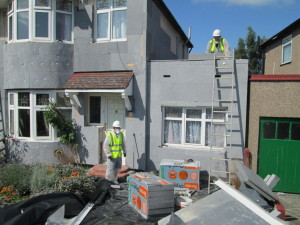
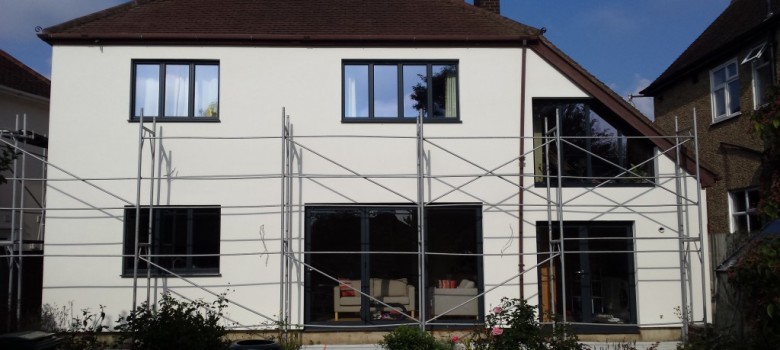

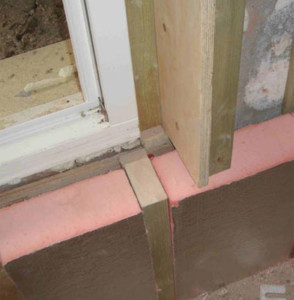




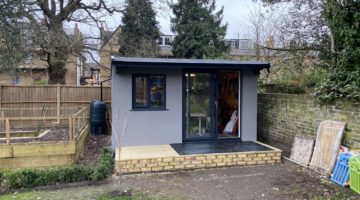
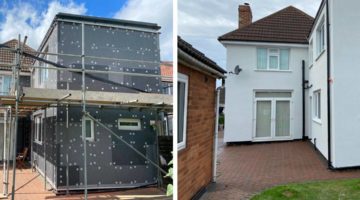
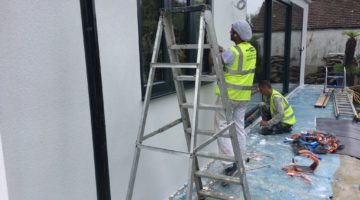





This is extremely comprehensive! Thanks for sharing! I am just waiting for the grant to come back to see if it makes the investment worthwhile!
You havn’t explained about insulating a cavity wall externally and the effect that the cavity can have on the potentail energy savings. Obviously cavity insulation is the preffered option, but some may still think external insualtion is best for them, this only being true for a solid wall. With a cavity you get a hugh draught passing behind the insualtion which continues to cool the internal brickwork (& home) resulting in a wasted effort in an atemt to save energy.
In both cases don’t forget to insulate the ceiling and draught proofing!
Hi Trevor, thanks for the comment. Agreed – if you have a cavity, then worth looking at insulating that first, although we do have many people tell us they are not interested in putting anything in the cavity (mainly due to concerns for damp) – so for these people solid wall insulation is worth it, but I take your point!
This provides great insight into the big differences between the two types of solid wall insulation
You only require a post 2012 EPC to access funding under the GDHIF not a full GDR. A GDR may also provide direction/ recommendations for other energy efficiency measures/grants.
Your article also failed to mention that alternative finishes are available for external wall insulation like brick slips or stone.
Factoring the cost of re plumbing a kitchen & the refitting of kitchen units, replumbing & fixing of radiator, bathrooms/showers etc all need costing into internal insulation works. These costs can sometimes outweigh the cost for scaffolding externally
We had our walls insulated externally using GreenAge and BeConstructive (GreenAge project managed). The difference in our house is absolutely massive, our heating is rarely on now, even during the recent cold snap. It is obviously not cheap, but for us it was defintely worth it, we took advantage of the £6ooo government grant which makes the payback a little under 4 years. The thing that we didn’t expect to be honest was the quality of the end result, the look of the house has really improved (we used to have that God awful pebble dash). THe white render looks a lot cleaner.
All in all it took Jack and his team 7 days to complete and there was no disruption in the house at all. I would honestly recommend this to anyone with non-cavity walls!
Interesting article – I have a few queries/comments because it feels stacked against interior insulation which is actually almost as efficient and much less expensive than exterior insulation:
1) Floorspace 1: “In Westminster for example 1m2 of property costs over £7,500. In a 5m x 5m room, losing 10cm off all the internal walls would cost the owner £15k.” – Have you got your example right here? In a 5mx5m room you wouldn’t insulate all walls, just the exterior wall, which would therefore probably be £3,750 rather than £15,000? To provide a fair comparison what you really need to do is provide a full example of interior and exterior insulating a full house, including the total cost of the job, payback period, and any differences in final heating bills. From what I’ve seen elsewhere it’s much cheaper to interior insulate and the heating savings are within 5% of each other. In addition, how many houses are going to be worth £7,500p/sqm and in Westminster anyway?!
2) Floorspace 2: If you really want to preserve floorspace then you can remove existing plaster, therefore saving circa 2.5cm depending on plaster thickness, or even more if the property has been previously dry-lined on top of old plaster.
3) “Penetrating damp issues”: Must be fixed prior to installing external insulation AND internal insulation, not just the latter.
4) Cons of internal insulation: These seem overstated – i) Having floorboards up to insulate between ground and first floors is not difficult for a competent builder or even DIY enthusiast, ii) if installing a vapour layer it is not difficult to say to Clients “don’t put nails through exterior walls”; this is really an imaginery blocker.
5) Warm up time: One would imagine that an internally insulated property would warm up much quicker than an externally insulated property because with external insulation you’ve got thick (cold) walls to heat first, rather than a thin layer of plasterboard and then your insulation?
Hi Jason,
Thanks for your response, you definitely have some valid points there, but I just wanted to reply with our view on them:
1) The example of Westminster is the extreme, but we see many people in flats in the suburbs who are very much against the idea of losing space. Space is really a problem through london and indeed much of the UK. Price isn’t necessarily the number 1 concern here, its the practicalities of fitting furniture in an already small London room.
3) When we talk about penetrating damp, we are talking about moisture getting through the porous brickwork, rather than rising damp. External insulation will definitely help solve this problem as it blocks moisture from getting to that brickwork. Rising damp of course should be treated prior to insulation.
5) I think the idea is that those thick cold walls aren’t as cold any more because of the external insulation. You dont ‘cold start’ a house every time you turn the heating on. A normal house tries to maintain a temperature for the most part.
Thanks for your post.
We had cavity wall insulation done a couple of years back and to be honest I’ve not been impressed. Would fitting external wall insulation now be a sound idea?
Hi Joe,
Absolutely – Cavity insulation will not make as big an impact as external insulation, and doing both will bring the walls u value way down to the 0.2 area.
Hi I have solid brick I have had my house coated with a special which supposed to stop damp which it still comes through my wall are pebble dashed would the external insulation work on my walls
Should cavity wall insulation be removed before having EWI fitted
Cathy, it should be ok to install over the top leaf assuming the existing cavity wall insulation isn’t causing any other underlying problems, e.g. insulation has bridged the DPC, there is damp due to wet insulation, etc. Have a look at this article linked to EWI with existing cavity wall insulation for additional information – http://www.thegreenage.co.uk/get-external-wall-insulation-on-cavity-walls/ Hope this is of help.
Will my neighbours external I sulation of 150 mm affect my house? We are semi detached I am worried there will be a water running affect from their protruding external walls and damp will lodge on my side. Please advise
It should be fine. The installer who is putting the product should use stop bead and render on top. On the top they should cap the system off with a verge trim if there is no roof canopy for the insulation to abut to. In any case the insulation I take it will go in between the party wall (not encroaching on your side), so any damp issues should be mitigated. Best to speak to your neighbour and clarify the installation procedure.
can the solid wall panels catch fire
Hi Chris,
They really shouldn’t – I am sure this question is fielded due to the tragedy that occurred yesterday in North West London. I don’t want to speculate what happened there, but I would find it very unlikely a homeowner would ever get rain screen cladding on their property. The External wall insulation systems that do get installed on properties tend to have either EPS or mineral as the insulation material. From a fire point of view, mineral wool is better than EPS, but both these insulation materials would be completely enclosed in concrete adhesive (on most systems), so there would be no point at which the fire would touch the insulation material, so once installed – no, there should be no risk they catch fire.
You certainly made a very valid point as I had been looking to see if internal wall insulation would be more effective since you are3 not going to heat thermal mass of bricks as well as the room, so when you have internal insulation you are just heating the room up to the insulating boards, and replenish any loss of heat through the insulation into the walls, Also room would heat much quicker as no heat is being used to heat the cold walls, Not sure what thickness minimum you would recommend, would 25mm thickness be better than no insulation obviously, but would you say50mm being minimum, if space was not the objective then 75mm or even 100 mm would be tons better.
Can external ‘cladding’ boards be used as insulation between internal spaces, like the void between ceiling and floor space??
Finding a competent installer is nearly as rare as hens teeth. Our 25 year warranty DOES NOT cover the work as we expected it to – it merely insures against the installer going out of business and limits the pay out. Penetrating damp? We had a problem with existing rain ingress, we were left with water pouring into our lounge and also into the porch (never in the porch before). Our installer was manufacturer trained & recognised and member of the BBA & INCA yet two years after the installation (following extensive remedial works – which failed to stop the ingress – we found out about BBA Certificates and found out that due to the pre-existing rain ingress EWI should NOT have been put on our house without the ingress being sorted out first. So much for using a trained and recognised contractor.
The author of this article never mentioned that you do need to apply for building control for any changes to a buildings thermal envelope
Can partial external insulation work? We got quotes for insulating the complete exterior of house (detached bungalow type, circa 1950s, solid brick) but all were just too expensive for us. We feel we only need it on one end of the house which sits slightly higher than other end of house. This colder end sits atop a slopping foundation where the brickwork is exposed and air gets underneath this section of the house through the cavity space below. Ideally we only want to do the gable end of the more exposed part of the house, to the ceiling line (attic already insulated) and about a 5m stretch on both sides. What are your thoughts on this?
Hi Felix!
Yes, so partial external wall insulation does work. In fact, when installed on the colder areas such as the north facing walls, then it is very effective. Although insulating the whole house is always the best solution, much like wearing a sleeveless jumper any insulation is better than none!
How are the thermal bridges overcome, between 1st floor and ground floor ceiling void, when using internal wall insulation?